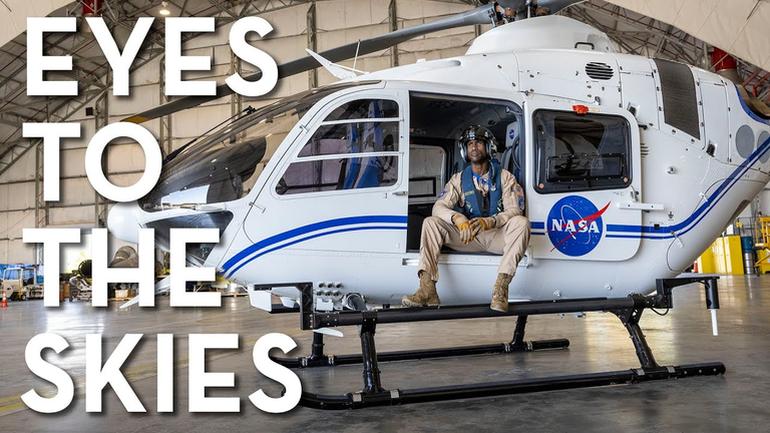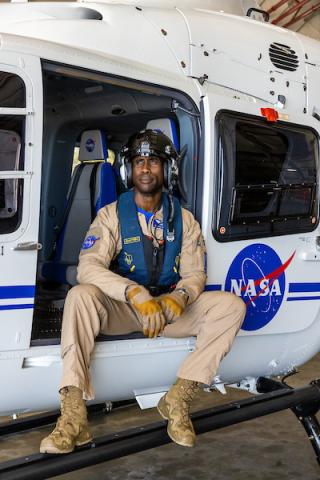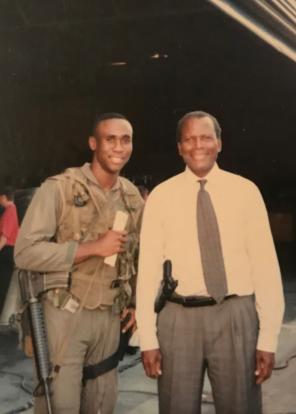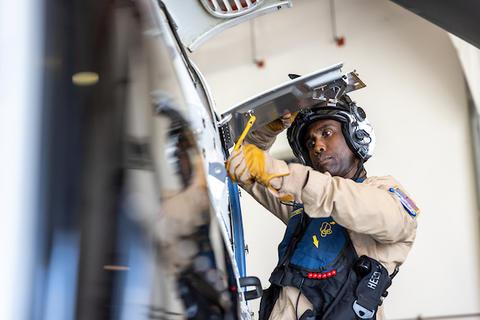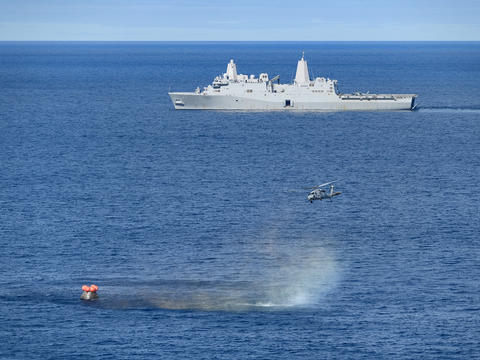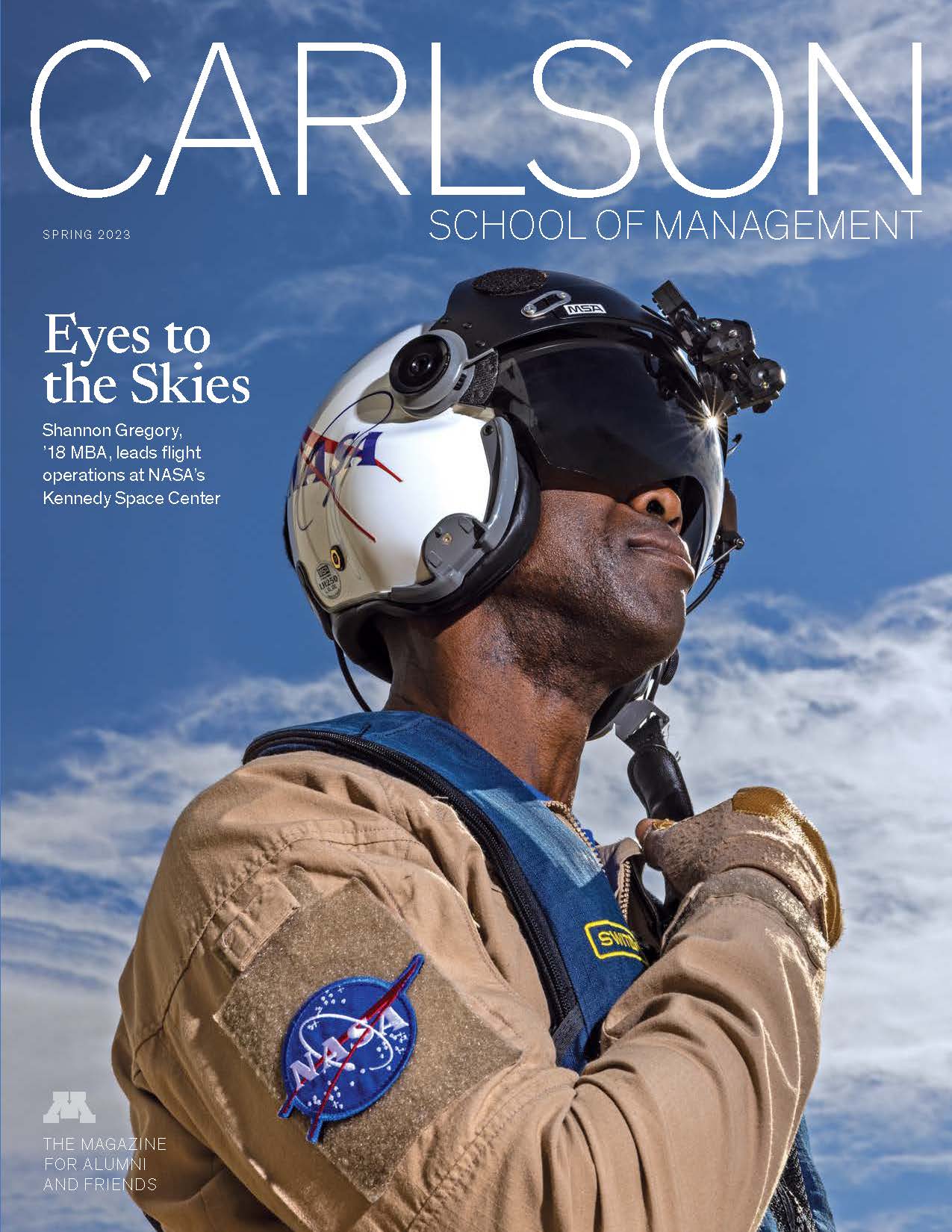
Carlson School Alum Shannon Gregory Soars High at NASA
Wednesday, April 19, 2023
By Rose Semenov
Inspiration can come from surprising places. Just ask Shannon Gregory, ’18 MBA.
Eyes to the Skies
Shannon Gregory, '18 MBA, is helping usher in a new Space Age as the chief of flight operations at NASA's Kennedy Space Center.
In the mid-90s, Gregory found himself on the movie set of The Jackal, an action-thriller starring Bruce Willis, Richard Gere, and Sidney Poitier. The movie needed trained military members to complete some stunts in the film and Gregory, then active in the Marines, signed up.
Noting Gregory had the same height and build as Poitier, the movie crew quickly identified him as a stunt double for the legendary actor. In a blink-and-you-miss-it scene, Gregory made his Hollywood debut by jumping out of a helicopter and sliding down a rope onto a rooftop. Behind the scenes, the young Marine found himself face-to-face with an icon.
“[Poitier] asked me how my military service was, and at the time, I wasn’t a pilot,” remembers Gregory. “I said, ‘It’s OK, but it’d be better if I had this flying opportunity.’ He said to me, ‘Before the week’s over, I need you to take the first two steps in making sure that happens.’”
Poitier’s profound directive became the final nudge Gregory needed to put in motion his childhood dreams of becoming a pilot. “It was something that was a great impact on me, and rightfully so. I took those first couple of steps that turned into, finally, this step today.”
That step? Working at NASA—an organization known for its giant leaps.
More than two decades after that fateful conversation with Poitier, Gregory is now the chief of flight operations at NASA’s Kennedy Space Center in Florida. In his role, he manages operations of the center’s helicopters and unmanned aerial systems and provides support with space launches and recoveries—most notably with the Artemis program.
Named after the Greek goddess of the moon and the twin sister of the god Apollo, the Artemis program marks NASA’s return to the moon. The program entails a series of missions that will send the first woman and person of color to the moon and eventually establish a lunar base camp for astronauts.
Having a small part in the historic program is “mind-blowing” to Gregory, but at other times feels as though he’s been preparing for an opportunity like this all along.
“There are days where you do have to pinch yourself because [NASA] is an amazing place to work ... but there are professors out there who basically told us to get ready,” says Gregory. “Because it’s going to happen.”
From Pilot to MBA
After six years in the Marines, Gregory joined the Minnesota Army National Guard, where he became a helicopter pilot. He flew during deployments in Kuwait and the Persian Gulf, led aviation teams, and when stateside, managed search-and-rescue efforts in Minnesota, North Dakota, and Wisconsin.
By the mid-2010s, he was looking to bridge his 25 years of military experience with a business background. David Wagner, ’18 MBA, a fellow guardsman at the time, encouraged Gregory to enroll with him in the Carlson Executive MBA program. He says Gregory’s magnetic personality and drive made him stand out in the classroom.
“[Gregory’s] always been a real outgoing guy, very personable,” describes Wagner, a longtime friend. “He has a very good presence. I’d say probably one of his greatest attributes is that he can captivate people.”
At the Carlson School, Gregory honed his leadership skills, gaining a better understanding of organizational behavior and learning what it takes to guide teams through adversity.
“Military leaders aren’t always great at asking for help,” admits Gregory. “I think the Carlson School helped me to be the kind of leader that understands that needing help or asking for help was OK.”
It’s a lesson he applies on a regular basis.
“At NASA, I’m never going to know everything. I’m never going to know half of everything because it’s a heavily technical organization,” he explains with a smile. “I’m not an aerospace engineer, but there are times when those engineers are very helpful to me to be able to make the decisions necessary to get the job done. So, as a manager, as a leader, it’s my job to listen to individuals to guide our decisions in a way that the whole entire organization can be successful.”
But, unlike most jobs, decisions at NASA happen with the whole world watching.
As a manager, as a leader, it’s my job to listen to individuals to guide our decisions in a way that the whole entire organization can be successful.”
A New Space Age
NASA’s new age of space exploration began in November with the Artemis I launch at the Kennedy Space Center. The mission sent an uncrewed Orion spacecraft beyond the moon and back to properly test the new Space Launch System rocket and the Orion, which will carry astronauts in future Artemis missions. As chief of flight operations, Gregory worked to help ensure a safe liftoff and landing.
Leading up to the launch, Gregory coordinated with mission control as his helicopter team conducted surveillance to secure clear airspace. In addition, the helicopters, outfitted with powerful cameras, provided mission control with high-resolution imagery to complete final launch inspections and to survey takeoff from various angles in real time.
Alongside Gregory in the cockpit for the final preparations was Stephen Lee, the Kennedy Space Center’s chief of aircraft maintenance.
“It was a monumental task for him as a leader,” Lee says, describing Gregory’s tasks as encompassing “all the pre-planning, the pre-thought, and ensuring that everyone was able to be where they’re supposed to be and on time.”
Hovering from a safe position out of the blast zone, they listened to the countdown and watched Artemis I roar to life as it lit up the night sky and soared to the heavens. The Orion spacecraft spent nearly a month in space, traveling 1.4 million miles on a path that extended about 270,000 miles away from Earth—shattering the record set by the Apollo 13 for the farthest distance from the planet by a spacecraft designed to carry humans.
While NASA scientists tracked Orion’s two lunar flybys, Gregory’s focus turned toward preparations for the spacecraft’s journey home. Re-entry into the Earth’s atmosphere would be another gigantic test to ensure astronauts’ safety in the next Artemis missions. For Gregory and his team, the pressure was on to “do it right and down to the number.”
On December 11, 2022, Gregory watched from the control tower of the USS Portland in the Pacific Ocean west of Baja California, Mexico, near the splashdown site. Coordinating with Navy helicopter pilots to provide the imagery, he and his team waited with bated breath in the tower for the first sign on the chopper’s video feeds of Orion breaking through the Earth’s atmosphere.
“The minute that our pilots said the word ‘capture,’ we all cheered,” Gregory recalls. “It was like the biggest cheer that could happen ... to hear that we had actually a capture of an image as [the Orion’s] coming over the horizon was pretty exciting for us.”
With the visuals, the control center could monitor Orion’s descent and assess potential heat damage from re-entry. Under Gregory’s leadership, the crew meticulously tracked the re-entry timing “down to the second” through the scheduled blackouts to the deploying of the chutes. In the span of about 20 minutes, the Orion slowed from nearly 25,000 mph to 20 mph for a successful splashdown.
“It was like the biggest relief and [felt like] being a part of something bigger than yourself, which was just really heartwarming,” Gregory says.
No opportunity is outside of your reach. I can say that this is the best job, outside of riding the rocket, at NASA. But one thing I remind myself of is that nothing is out of your reach. So continue to keep your eyes toward the sky.
Inspiration is a Superpower
A safe return of Orion paves the way for more scientific progress. Back at the Kennedy Space Center, technicians and engineers will evaluate the spacecraft’s systems and heatshield to guide their work for the upcoming crewed Artemis missions. In addition, scientists will analyze Orion’s onboard experiments, including a pair of manikins that tested the effectiveness of wearing a radiation vest to reduce exposure.
The lessons from Artemis I will inform Artemis II, tentatively scheduled to launch in 2024. The 10-day mission will include a lunar flyby and critical systems tests in preparation for Artemis III, during which NASA intends to launch crews once a year. Those missions will focus on putting the Gateway space station in the moon’s orbit and establishing a long-term presence on the moon’s surface.
Gregory says it’s an honor to be part of such a historic space program.
“I’m so glad that the thing I first fell in love with—helicopters—translates into an opportunity to be able to lead in a great, dynamic organization,” he says.
To his friends, it’s no surprise to see him thrive.
“[Gregory] has the drive and he is not scared to put himself out there to try something different and might be a little out of his comfort zone,” says Wagner. “He definitely has a passion for flying and leading people as well.”
It’s perhaps that same spark Poitier saw in the young Marine. Poitier’s ability to inspire him and others to achieve is a “superpower” Gregory says he aims to share with the next generation of trailblazers.
“No opportunity is outside of your reach,” says Gregory. “I can say that this is the best job, outside of riding the rocket, at NASA. But one thing I remind myself of is that nothing is out of your reach. So continue to keep your eyes toward the sky.”
